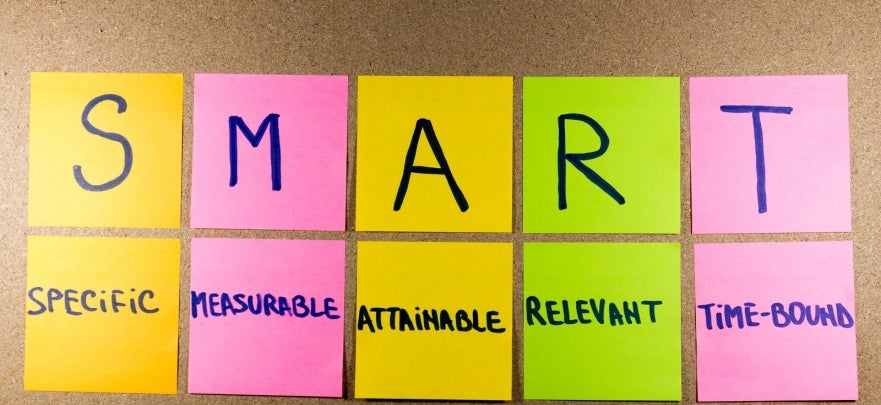What are SMART Goals and How to Implement Them
We are all familiar with setting goals and how easily they can be made. And… How easily they can be broken. Achieving goals isn’t easy and requires some specific planning as well as some good ole fashioned work.
Setting SMART goals is the first step in turning any of your goals into a reality.
I’m sure by now you’re wondering: What is a SMART goal? Well wait no further… A SMART goal is a short statement that a person makes to lead them in the direction of what they want to accomplish.
SMART stands for Specific, Measurable, Achievable, Realistic, and Timely
S – Specific: Be as specific as possible about what you want to accomplish. It shouldn’t be a detailed list of how to achieve these goals, but rather include answers to the familiar ‘W’ questions:
Who – Who needs to be involved to achieve the goal?
What – What you are trying to accomplish? You may want to get extremely detailed with this one.
When – When would you like to accomplish this goal? Set a reasonable and realistic deadline for yourself. Don’t forget to reward yourself for the small milestones along the way.
Where – Although this question doesn’t always apply, if there’s an event or location don’t forget to identify it.
Which – Determine any related obstacles or requirements. This is a beneficial detail in deciding whether or not your goal is realistic. For example, if your goal is to ride a bicycle in an upcoming event, but you don’t own a bike and can’t really afford one yet, your goal will be pretty difficult to achieve. In an effort to create a realistic goal you may start with a goal of managing your finances in order to buy a new bicycle. Now you’ve opened the door to setting the next goal to ride in that event.
Why – What is the reason for the goal? Why are you doing this? Professional, financial, spiritual, relationships, physical, etc.…
M – Measurable: What are you going to measure in order to determine if you meet the goal? Measuring progress makes your goal more tangible. If your goal is long term, set some milestones with specific tasks to accomplish.
There should always be some form of information to measure to determine if your goal has been achieved. Measuring the data needed to achieve a goal can be included in your action plan. If there are no obvious efforts to measure, consider why this goal is important and what success may look like.
A – Achievable: How important a goal is to you? What can you do to make it attainable? The answers to these questions are meant to motivate not discourage and may require developing/changing attitudes. How to accomplish the goal? Do you possess the tools/skills needed? If not, what it would take to attain them?
R – Relevant: Is your goal in line with everything else in your life? Is it relevant to the bigger picture you have envisioned?
T – Time-Bound: Chances are you’re not going to accomplish your goals without realistic target dates. Ask yourself, am I truly able to achieve my goal within this time period? Be honest with yourself about what you are able accomplish and how quickly you can succeed. It may be helpful to create milestones to achieve towards your goal at specific points within your timeline. Time constraints create a sense of urgency.
Here are a couple of cited examples for writing your SMART goals:
A financial SMART goal is paying off unsecured debt.
Specific: I will pay off $5,000 in unsecured debt.
Measurable: I will apply at least $100 each month to that debt.
Achievable: I can achieve this if I cut back on my cable, mobile phone service and other discretionary spending.
Relevant: I need to reduce my debt to apply more money to savings and future goals.
Timely: I will pay off this debt in 30 months.
A professional SMART goal is to grow professionally in my position to increase my annual salary.
Specific: I will earn a pay increase of 30%.
Measurable: I will document my progress and work with management to ensure I am meeting the goals and expectations of the job throughout the year.
Achievable: I will achieve this by working hard and becoming more valuable to the company.
Relevant: I will participate in development opportunities and project opportunities throughout the year to better demonstrate my contributions during the course of the year.
Timely: I will accomplish an increase within one year of employment.
Now that you have an idea of what SMART goals are and how they are prepared, it’s time to implement your plan. Here a few steps you could take in order to implement and stay on track with your efforts: Share your goals with a small group of friends to create a supportive network. Publish your goals by either emailing, handing out printed copies or on a bulletin board for you and your support group to see. Periodically review your goals. Check in with yourself and your group to make sure you’re on track for success.






